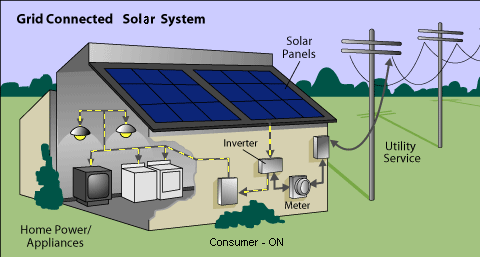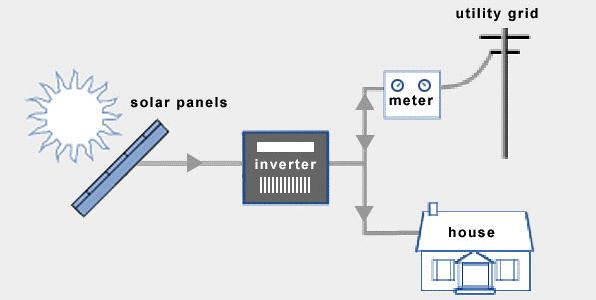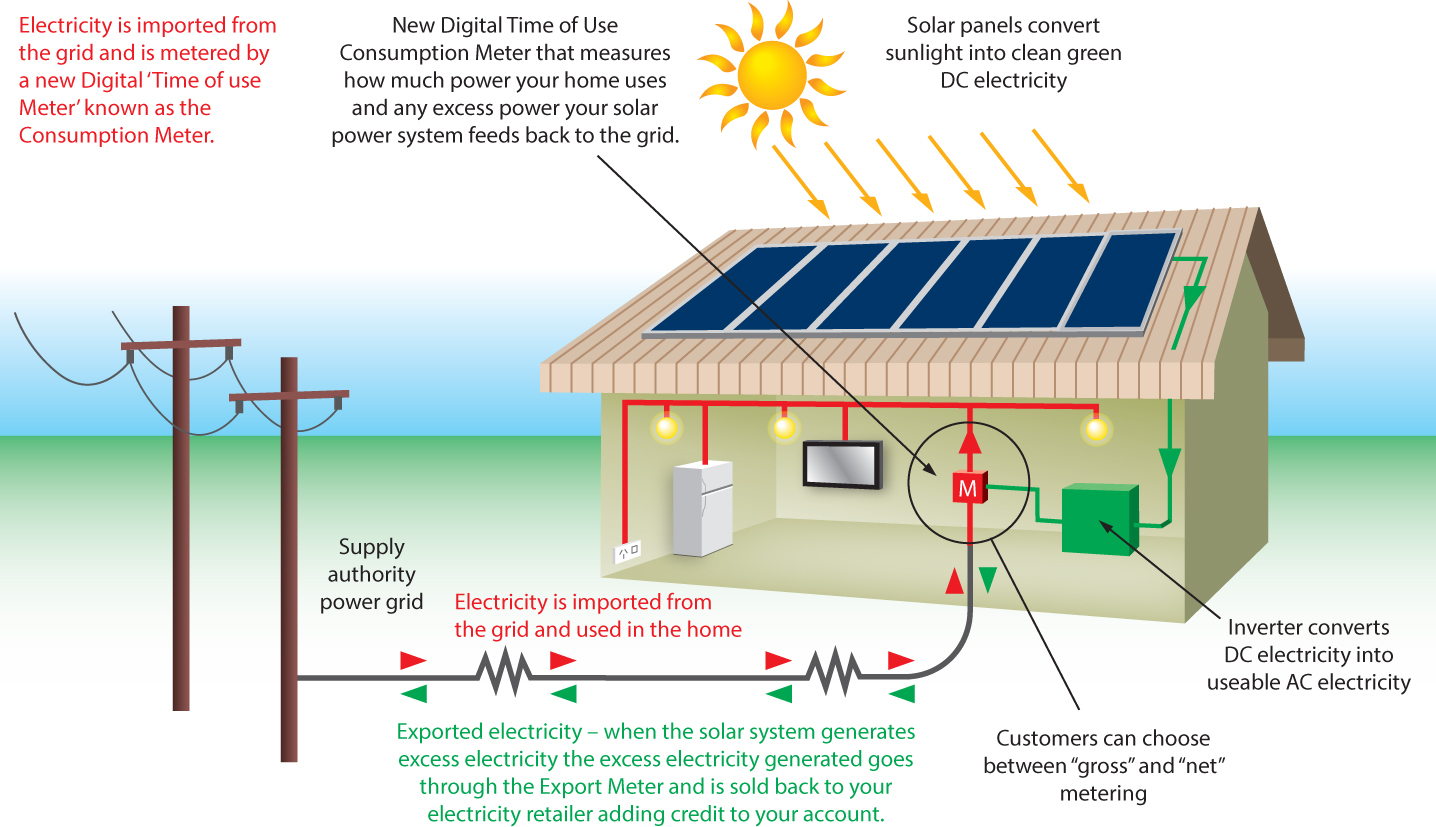On Grid Solar System
In India, most modern solar system are Grid connected Solar system. Grid tied or Grid connected means your solar system is tied or connected to your existing electricity supply line through Grid tie intelligent invertor and allow residents to use solar energy as well as electricity from the grid.
Solar Grid tied system does not need to produce 100% of electricity demand for house or business. In Grid tied solar system any excess power your solar panels generate is fed back into the grid and when Solar system is not producing enough energy (at night, foggy or on a cloudy day) electricity from the grid will supplement any shortage from solar system.
Here government electrical grid or local utility company grid act as battery bank and you do not have to buy and maintain expensive battery backup system to store electricity produced by Solar system.

BENEFIT
- No maintenance required apart from regular cleaning of panels.
- Eliminate need for expensive batteries.
- Recover your cost within 5-6 years and then use electricity for free ( depending on size of system installed)
- No electricity rate hike
- Can earn money where large rooftop and gross metering is allowed
- Solar grid connect system runs in parallel to grid so it is not required to have all your requirement of electricity from Solar system.
DRAWBACKS
- On Grid systems do not provide power during a grid outage. Grid tied system only replace bill amount but not power outage.
- Require large rooftop sunny area for installation of solar panels .
- Recover your cost within 5-6 years and then use electricity for free ( depending on size of system installed)
- No electricity rate hike
- Can earn money where large rooftop and gross metering is allowed
- Solar grid connect system runs in parallel to grid so it is not required to have all your requirement of electricity from Solar system.
Net Metering :
Net Metering is an electricity policy for utility customers who operate their own on-site grid tie Solar System such as photovoltaic systems. Solar (PV) systems are connected to the utility grid via the customers’ main service panel and meter and, when generating more power than is needed at the site, return excess electricity to the grid through the power meter, reversing the meter from its usual direction. As a result of the meter working in both directions – one way to measure power purchased (when on-site demand is greater than on-site power production), the other way to measure power returned to the grid – the customer pays the “net” of both transactions.
At the time of billing, there are three possible outcomes.
- First, if the utility customer has purchased more power than they’ve returned to the grid, they will be billed for the “net”.
- Second, the “net” could be zero, although this is unlikely since power use varies somewhat from year to year as does weather which impacts PV system performance, so the odds are pretty low that the bill would be exactly zero.
- The third possible outcome, is that the solar power system generates more power than needed in total over the course of billing period and there’s excess credit. This could happen if the PV system is over-designed or if the customer’s usage declines significantly. Regardless of the reason, if there is excess credit on account, as per state Net Metering policies the credit will be kept by the utility company to set off future use or pay the amount of credit to customer.

Gross Metering :
(Domestic Gross metering available only in Chandigarh along with net metering)In case of Gross metering all your power generated through Solar System is fed to the grid. Let’s say that you choose to feed in all of the electricity that your rooftop solar system generates directly into the central grid without consuming any of it at your house. Instead, both at night and the day, you consume electricity from the grid.
At the end of the day, you will have had a cumulative electricity consumption from the grid, as well as having fed electricity into the grid. You will be billed for your cumulative consumption, AND you will be paid for the “gross amount of electricity” you pumped into the grid. These are two entirely separate billing processes. This payment mechanism is called gross metering. Therefore the essential difference between net metering and gross metering is that under the former, you are billed only for your “net electricity consumption”, while under the latter, you are paid for the “gross amount” of electricity you feed into the grid, while being charged in full for your grid electricity consumption.

HOW DOES SOLAR POWER ACTUALLY WORK?
Solar power is renewable energy resource that uses photovoltaic (PV) systems to create electricity. You generate free electricity from the sun that powers your home or Office reducing your electricity bills and impact on environment. Any solar power you don’t use gets pushed back into the utility grid for a full value credit.The process and equipment that can help you generate your own clean, more affordable energy is explained here.
- Sunlight – The Sunlight is absorbed by the Solar Panels installed on roof.
- Solar PanelsThe solar panels are made up of photovoltaic (PV) cells, which convert sunlight into direct current (DC) electricity all day.
- InverterThe invertor converts the DC electricity generated by the solar panels into the alternating current (AC) electricity which you can use in your home or office.
- Utility MeterThe utility meter measures your energy use. 4. Any additional electricity that’s not used by your home is fed back into the grid. It actually goes backward when your system generates more power than you immediately need. This excess energy offsets the energy you use at night.
- Utility GridYour home is still connected to the grid. Electricity is drawn from the grid when you need more power than your solar energy system can produce. You’ll need that power from the utility company at night, but don’t worry. The cost is offset by any excess clean energy you put into the grid during the day.
